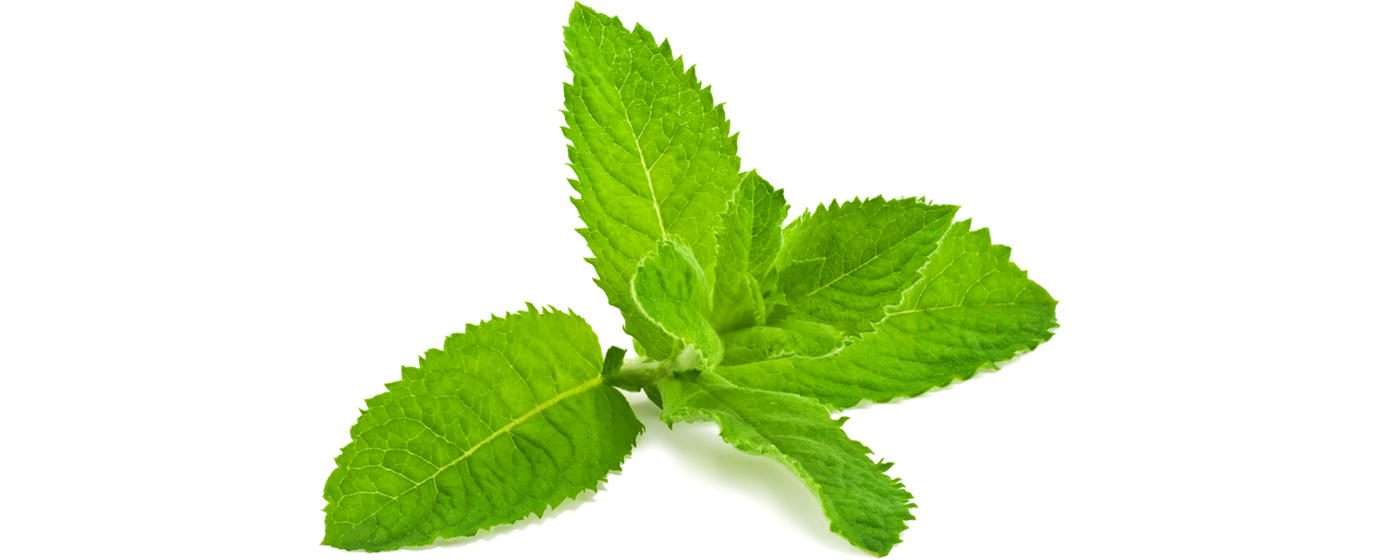Mint
Mint is a plant which grows across the world and spreads like a weed. The medicinal properties of its leaves and the menthol which they contain, as well as the flavour they add to dishes, make it a popular aromatic plant.
Origin and distribution of mint
Mint is a perennial plant which grows in moist soils. Coming from the Lamiaceae family, it has small bluish-white, mauve, pink or lilac flowers. It propagates by pollination (method of reproduction of flowering plants, mainly thanks to insects such as bees), but also through rhizomes, the horizontal root-type structure containing food reserves. These rhizomes grow underground, with stems appearing above ground at regular intervals. The name ‘mint’ is thought to come from Greek mythology, more precisely from a nymph named Minthe who was transformed into a plant.
Varieties and by-products
There are eighteen different species of mint, though the market is dominated by three of them, along with their hybrids: water mint (Mentha aquatica), American wild mint (Mentha canadensis) and spearmint (Mentha spicata).
Peppermint (Mentha piperita) is a hybrid mint, a cross between Mentha aquatica and Mentha spicata. It is the most commonly used mint in phytotherapy, a form of medicine based on plant extracts. Its leaves are also used in infusions for their digestive properties or in cooking, for example in tabbouleh, salads or stuffing. The sensation of freshness felt in the mouth when it is eaten comes from the menthol it contains. Finally, its leaves are also used for the production of essential oils for their antiseptic (disinfectant) properties.
Spearmint (Mentha spicata, or viridis) consists of a purple stalk and pink or lilac flowers, reaching a height of 30 to 60 cm, though able to grow up to 1.20 m. Originally from the Middle East and Southern Europe, spearmint now grows around the world in moist and sunny environments. Its leaves are used to treat a whole host of ailments including digestive problems, the common cold and skin and mouth conditions. It is also used in the agri-food business for manufacturing toothpaste, mint chocolates, lotions and liqueurs and as an aromatic herb.
Watermint (Mentha aquatica orhirsuta), with a green or reddish stalk and pink or white flowers, grows in Europe, Western Asia, Northern and Southern Africa and in America. It is often used for its antioxidant and antibacterial properties in the form of an essential oil.
Finally, American wild mint (Mentha canadensis), originally from North America and East Asia, represents the main commercial source of the production of natural menthol.
Nutrition
In addition to its aroma, fresh mint also provides vitamins, such as vitamin E and beta-carotene.
AUBURN, René et MAGNAN, Didier, 2008. Cultiver les plantes sauvages & comestibles. Chamalières : Éditions Artémis.
CANOPÉ et Académie de Dijon, s.d. Les plantes médicinales [en ligne]. [Consulté le 11 mars 2016]. Disponible à l’adresse : http://www.cndp.fr
DOUAY, Sébastien, 2009. Systématique des Angiospermes, Menthe verte, Mentha spicata [en ligne]. [Consuté le 14 mars 2016]. Disponible à l’adresse : http://galerneau.pierre.free.fr
TELA BOTANICA, 2011. Mentha aquatica L [en ligne]. [Consulté le 14 mars 2016]. Disponible à l’adresse : http://www.tela-botanica.org



